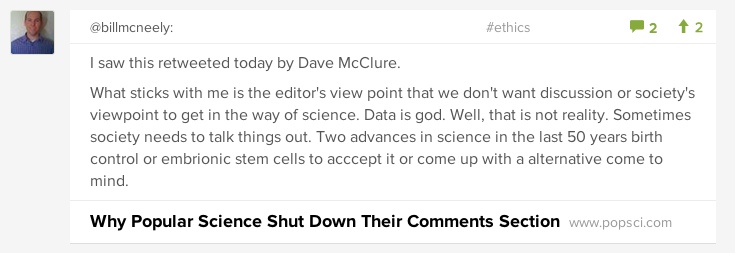Hypercard - Way Too Early
I have always loved the name of my friend Howard Morgan‘s now dormant blog – Way Too Early.
Some ideas are just way too early. And one of them was Apple’s Hypercard, which was a Mac application that came with a built in programming language. The interface was a series of cards that were mini apps inside of the Hypercard application. I built a few Hypercard based applications in the late 80s and early 90s as I was winding up my programming “career”.
But as I look around the mobile landscape, I see cards everywhere. Benedict Evans wrote a good post about this trend a few weeks ago. Google is pushing cards as a UI inside Android and their Google Now UI is the best example of that. Twitter has had cards inside of Tweets for several years now, although I wish they would display them by default in my timeline. The Facebook mobile UI looks like a series of cards, although you can’t really do anything with them, yet. And, of course, my favorite example are theKik Cards that are mini mobie web apps that run inside of Kik’s messenger. I’ve blogged about them a number of times here at AVC as Kik is a USV portfolio company.
It feels like the Hypercard metaphor has arrived as the atomic unit of content in mobile, both inside of native apps and, if Kik is going in the right direction (I think they are), as the default mobile web atomic unit (cards instead of pages).
The problem with the native app environment is that there are things you cannot do inside of a card without violating Apple’s and Google’s terms of service. If Facebook wanted their cards to allow the purchase of music or video natively in the card, well that would not be possible in the current regime.
On the mobile web, that is different. You can do anything you want in a browser, even if that browser is on iOS or Android. That’s a legacy of the desktop web and it’s a damn good thing. Innovation happens best when there are few if any limitations on what you can do as a developer.
So keep your eye on cards. I think Apple was on to something important from a UI and usability perspective thirty years ago when they started building Hypercard. It is now coming to life again on mobile and I think this will be the most interesting battle ground on mobile in the years to come.
